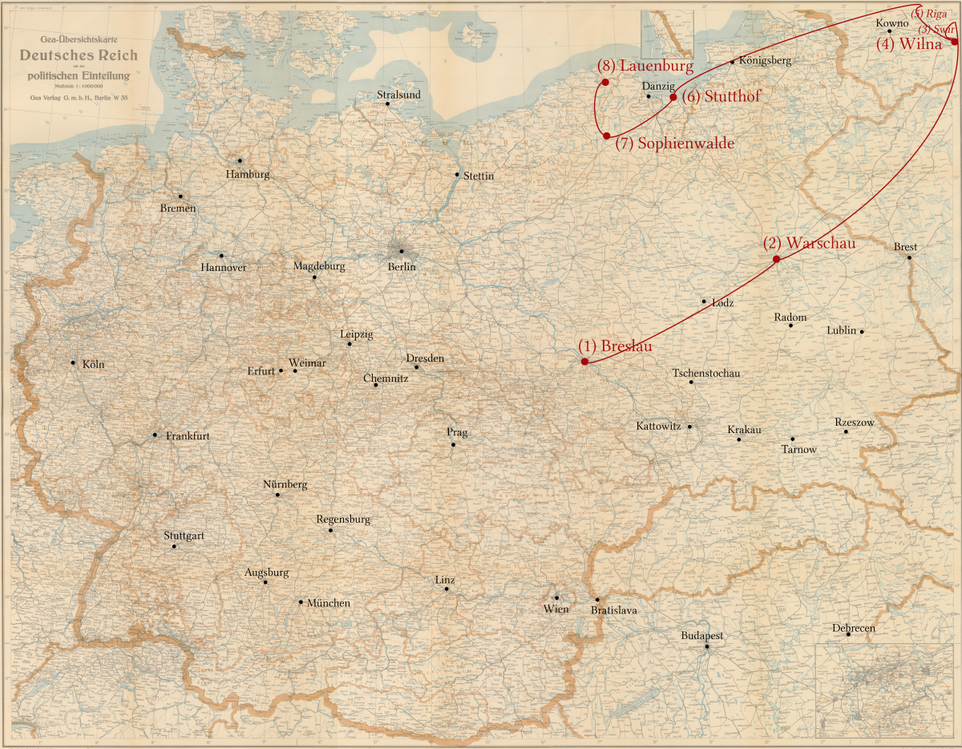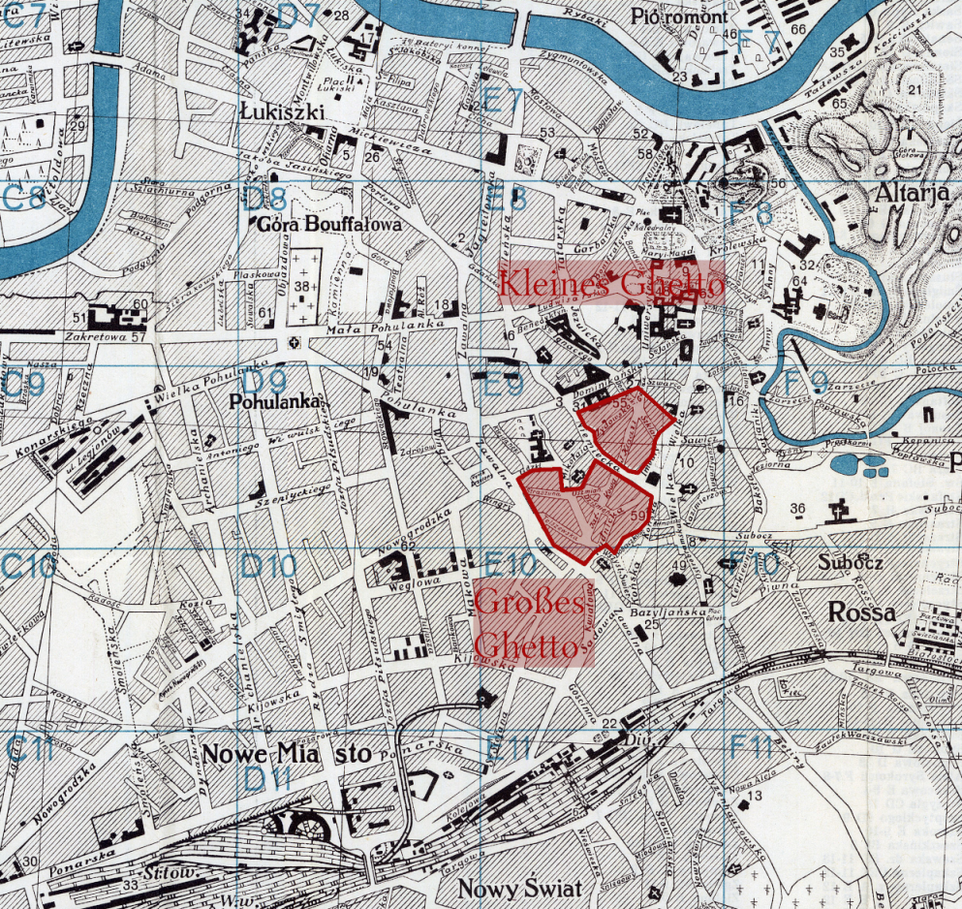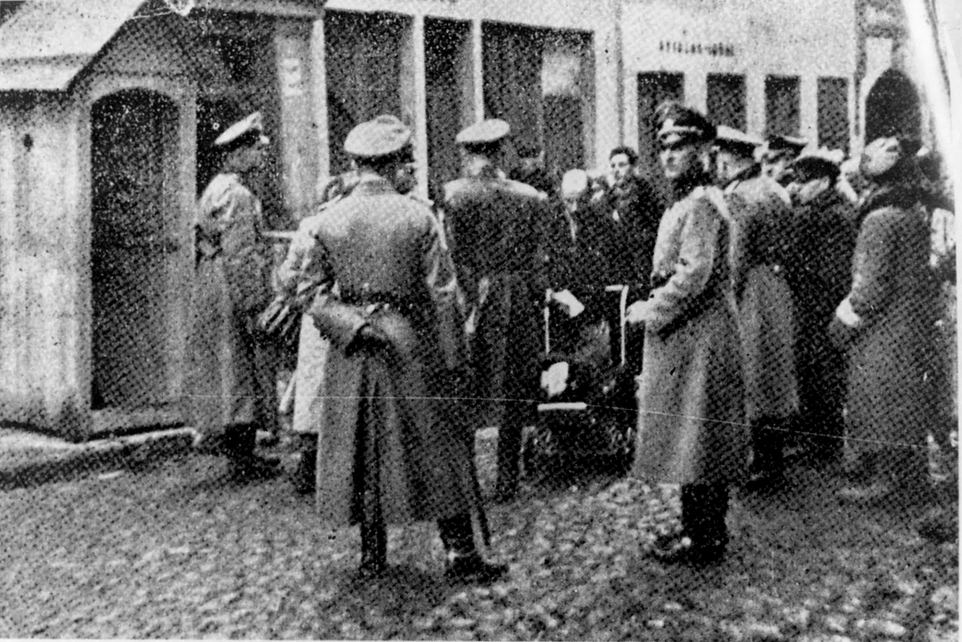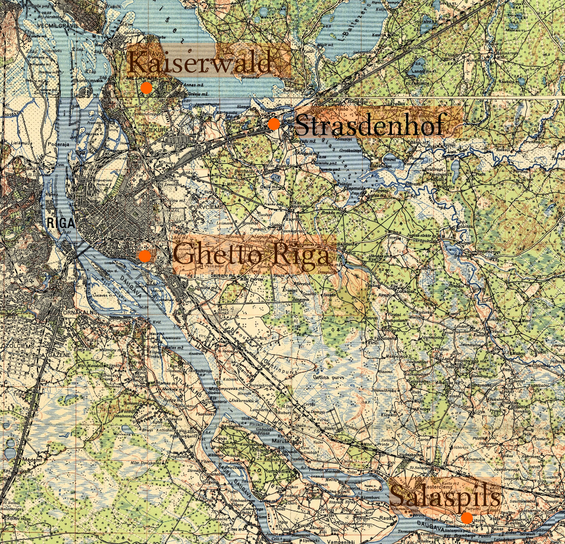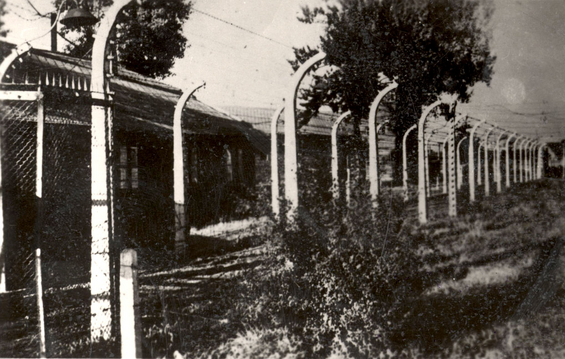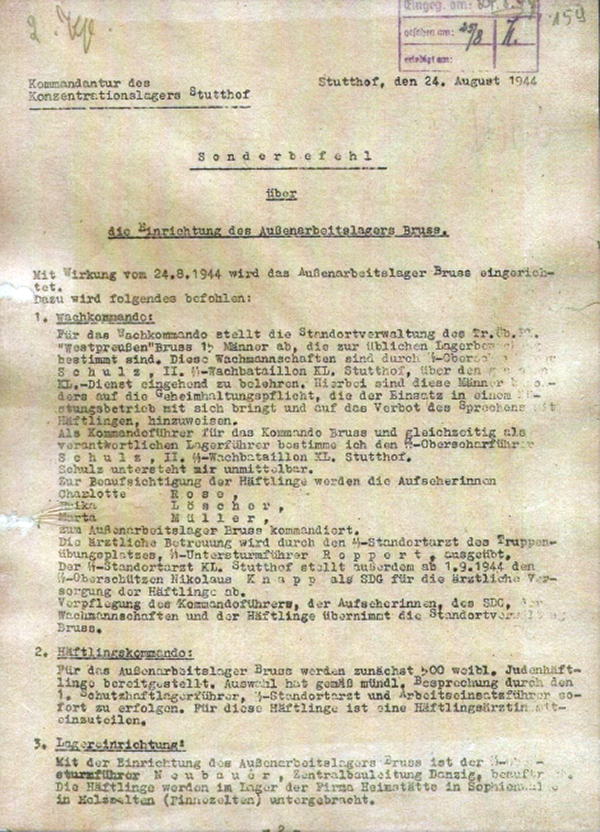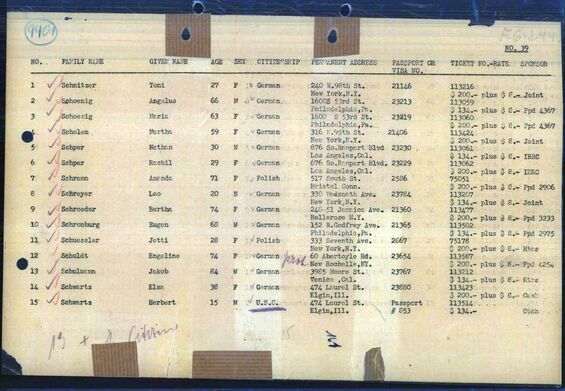The Biography of Rachil Schper, née Pinska, Breslau
Short biography and stations of her persecution
- Born on 1 June 1917 in Breslau, née Pinska.
- Trained as a doctor in Warsaw, completed in June 1939, travelled to Swir (interview)
- until 1941 doctor in the children's home in Svir/Lithuania
- August 1941 to January 1942 (1943?) in hiding in Swir, Swir ghetto
- January 1942 (1943?) to September 1943 Vilnius ghetto
- September 1943 to October 1943 Riga concentration camp/ Kaiserwald subcamp
- October 1943 to September 1944 Riga concentration camp/Strasdenhof subcamp
- September 1944 to 10 February 1945 Stutthof concentration camp/Sophienwalde subcamp
- 10 February 1945 to 10 March 1945 Evacuation march towards Lauenburg (Lebork), liberated near Chynow
- 1946/1947 Displaced Persons Camp Eschwege
- 1947 USA
Rachel Schper lost her parents in the Holocaust. She was 24 years old when the persecution began.
Notes
- The date January 1942 is derived from the available documents, the date 1943 from an interview with Rachil Schper (USC Shoah Foundation).
- Evacuation: see USHMM Encyclopedia of Camps and Ghettos, Volume II, Part B, p. 1431 f.
Before the War
Until the early summer of 1939, I lived with my parents in Warsaw on Przygowski Square. I was a young, life-affirming lady and had no physical ailments. After finishing secondary school, I studied medicine at the University of Warsaw. At the beginning of 1939, I graduated summa cum laude with a doctorate in medicine. Shortly afterwards, I took up a position in a children's camp in Lithuania. It was the children's camp "Am See Swiditz'" near Swir. As the borders were closed shortly afterwards, I was unable to return to Warsaw. I stayed in the children's camp until the outbreak of the German-Russian War. When Wilno and Swir were occupied in the summer of 1941, my ordeal began.
Source: Unless otherwise stated: Konrad Kittl files, Rachil Schper affidavit
August 1941 to January 1943 Swir/Swir ghetto
In August 1941, I was expelled from my home and sent to the ghetto. Here I lived in the most oppressive conditions and had to do extremely hard forced labour. It was dirty and humiliating work. I was often severely abused at work.
Source: Affidavit
Notes: In an interview from 1996, she describes a slightly different story: she was able to escape the ghetto and lived as an "Aryan" with a Mr Kozlowski. However, she then came to Vilnius in January 1943.
January 1943 to September 1943 Wilna Ghetto
In January 1942 (1943?), all the inmates of the ghetto were deported to Wilno. Here the conditions were even worse. The most horrible thing for me was to see how children were dragged away and people murdered.
| Ghetto Vilnius | |
|---|---|
| Location | Vilnius / Vilnius |
| Territory | General District of Lithuania, Reichskommissariat Ostland (1941-1944) |
| Opening | September 1941 |
| Liquidation | 23-27 September 1943; beginning of July 1944 [remaining ghetto]; liberation by the Red Army on 12/13 July 1944 |
| Deportations | From 23-27 September 1943 to Treblinka as well as Estonia and Latvia |
| Deployment of the prisoners with | Wehrmacht; German civil administration |
| Type of labour | Labour in the fur industry, work in the army motor pool, work in various workshops |
| Comments | In September 1941, a ghetto with two sections for around 60,000 Jews was set up in Vilnius in an area of the city that had previously been home to around 4,000 people. It was under the control of the German city commissariat and was guarded by the SS and Lithuanian auxiliary policemen. While mass executions were carried out on an ongoing basis, with "those unfit for labour" being the main victims, part of the ghetto, the "small ghetto", was completely dissolved in 1941. The approximately 1,500 inmates were shot. During two further "Aktionen", 5,000-8,000 people were selected and killed on 24 October 1941 and around 3,000 on 5 November 1941. After the deportations in September 1943, only around 3,000 Jews and their families remained in the ghetto. The last major selection was carried out on 27 March 1944. All children as well as older men and women who were "unfit for labour" were taken to Ponary and shot there. The ghetto was finally dissolved at the beginning of July 1944. The survivors were also murdered in Ponary.</td |
| Source: deutschland-ein-denkmal.de | |
Weitere Quellen:
- Ghetto Wilna bei memorialmuseums.org
- Ghetto Wilna bei zukunft-braucht-erinnerung
- Ponary bei juden-in-europa.de
- Ghetto Wilna bei holocaustresearch.org (englisch)
- Die Partisanen von Wilna - Jüdische Musik
- Ponary auf memerialmuseums.org
- Ponary bei yadvashem.org
- Jacob Gens (englisch), Vorsitzender des Judenrats des Ghetto Wilna. Man beachte den Unterschied im Umfang zwischen dem deutschen und englischen Eintrag. Wäre ein geeignetes Beispiel für die Wichtigkeit von Quellenkritik :-).
August 1943 to 30 August 1944 Riga-Kaiserwald / Strasdenhof
When the ghetto was liquidated, we were taken to Kaiserwald near Riga. One night before we were transported, we were left out in the open. Anyone who wasn't strong enough was beaten cruelly. After a few weeks I was sent to the Strassenhof camp near Riga. Here I was cruelly beaten one day. A German guard, who kept entering our barracks and abusing the inmates, took a pistol and hit me, especially on the head. {...[illegible]...} It was probably pneumonia, because I had a high fever and I was coughing badly. I fainted after this abuse and when I came round I was lying on my cot and the guard had gone. I only have compassionate prisoners to thank for the fact that I am alive. I was in a miserable state of health. I was emaciated to a skeleton and could barely stand on my feet from weakness.
| Subcamp of the Riga-Kaiserwald concentration camp | |
|---|---|
| Location | Rīga / Riga-Strasdenhof |
| Name | Riga-Strasdenhof, Widzemer Chaussee |
| Area | Livonia, General District of Latvia, Reichskommissariat Ostland (1941-1944) |
| Opening | August 1943 |
| Closing | "Evacuation" in August 1944 to Stutthof concentration camp, Kdo Thorn; on 25 September 1944 to Stutthof concentration camp |
| Gender | Women |
| Employment of the prisoners at | AEG (Allgemeine Elektrizitäts-Gesellschaft); VEF (Valsts Elektrotechniska Fabrika) |
| Type of work | Factory work; laying cables; earthworks and peat cutting for the factory |
| Source: deutschland-ein-denkmal.de | |
August 1944 to February 1945 Stutthof
At the end of August 1944, we were taken from the Strassenhof camp to the Stutthof camp. Shortly afterwards I was sent to the Sophienwald subcamp. Although I was only a human wreck, I had to do the hardest men's labour here. [1] We had to dig anti-tank trenches, lay roads and do various construction jobs. During the construction of a house, the roof fell off and I was buried. Fellow labourers dug me out and for days I just staggered to work. As winter approached, we had to work outside without shoes or adequate clothing protection.
notes
- The Jewish women were put to work mostly in auxiliary jobs, frequently with the forced laborers from Lebrechtsdorf and the Poles expelled from Warsaw. Their main occupation was building barracks and roads."', Quelle: USHMM Encyclopedia of Camps and Ghettos, Volume II, Part B, S. 1431 f.
| Subcamp of the Stutthof concentration camp | |
|---|---|
| Location | Brusy-Dziemiany / Bruss-Sophienwalde |
| Area | Reichsgau Danzig-West Prussia 1939-1945 |
| Opening | 24 August 1944 |
| Closing | "Evacuation": February/March 1945 |
| Prisons | approx. 500 |
| Gender | Women |
| Employment of the prisoners at | Moll company; Milka, Hoch- und Tiefbau AG; Müller u. Co; Welko u. Cohen; Pinow company; Zemke company |
| Type of work | Construction work on the military grounds of the SS/road construction; construction of a military training area |
| Comments | The prisoners were housed on the military training area in Sophienwalde |
| Source: deutschland-ein-denkmal.de | |
Quelle: Przemysław Szamocki (2013). "Filia KL Stutthof „Sophienwalde" oraz obozy pracy w Dziemianach 1943-1945" (PDF). Wydzial Historyczny. Gdańsk: Uniwersytet Gdański. pp. 3–4, 10, 28–29, 30. Retrieved 5.5.2017
The barracks we slept in had no windows. It happened to me that my hair froze to the wall one morning. In the Sophienwald camp, I realised for the first time that I was suffering from severe memory problems. When camp commander Schulz [1] once told me to do three things, I forgot two of them, which would usually have been grounds for a shooting. In the Sophienwalde camp all my teeth fell out.
Anmerkungen
- SS-Oberscharführer Willy Schulz was named commandant of the subcamp; since June 29, 1944, he had been serving in the 2nd SS-Guard Battalion at Stutthof."` Quelle: USHMM Encyclopedia of Camps and Ghettos, Volume II, Part B, S. 1431 f.
Evakuierungsmarsch
As the Russians approached our territory, we were driven on the so-called death march. Without food, barefoot and ragged, we were driven from place to place. I was liberated near Lauenburg on 10 March 1945. I was ill with typhus when I was liberated. I was immediately taken to a military hospital, but I can't remember what it was called.
After the War
After my liberation, I returned to Warsaw to look for my family. My parents had died and I didn't meet anyone else. At the end of 1945/46, I turned to the West because I was afraid of being persecuted in Poland. In the winter I came to West Berlin and from there I went to Eschwege near Fulda, where I lived until I emigrated to the USA.
Rachil Schper left Germany on 4 December 1947 and emigrated to the USA.
Notes
Further Sources
-----
Office for Compensation
Darmstadt 1964-?
Notes
- Today Svir belongs to Belarus
- Rachil Schper gave an interview with a contemporary witness (USC Shoah Foundation Institute number 18340)
Picture Credits
- Karte Wilna 1940, Reichsamt für Landesaufnahme, Berlin 1940; Quelle: mapywig
- Yad Vashem, Archival Signature 3380/582
- Yad Vashem, Archival Signature 1044/148
- Karte Riga, lithuanianmaps.com
- Yad Vashem, Archival Signature 17G01
- Przemysław Szamocki (2013). "Filia KL Stutthof „Sophienwalde" oraz obozy pracy w Dziemianach 1943-1945" (PDF). Wydzial Historyczny. Gdańsk: Uniwersytet Gdański. pp. 3–4, 10, 28–29, 30. Retrieved 5.5.2017
- Yad Vashem, Archival Signature 4578/8
- Schriftwechsel und Namenlisten, ausgestellt in Bremen: Verkehrsmittel Schiff (MARINE PERCH); Transitländer und Emigrationsziele: USA (hauptsächlich IRO-Unterstützung) 3.1.3.2/81650849/ITS Digital Archive, Arolsen Archives
